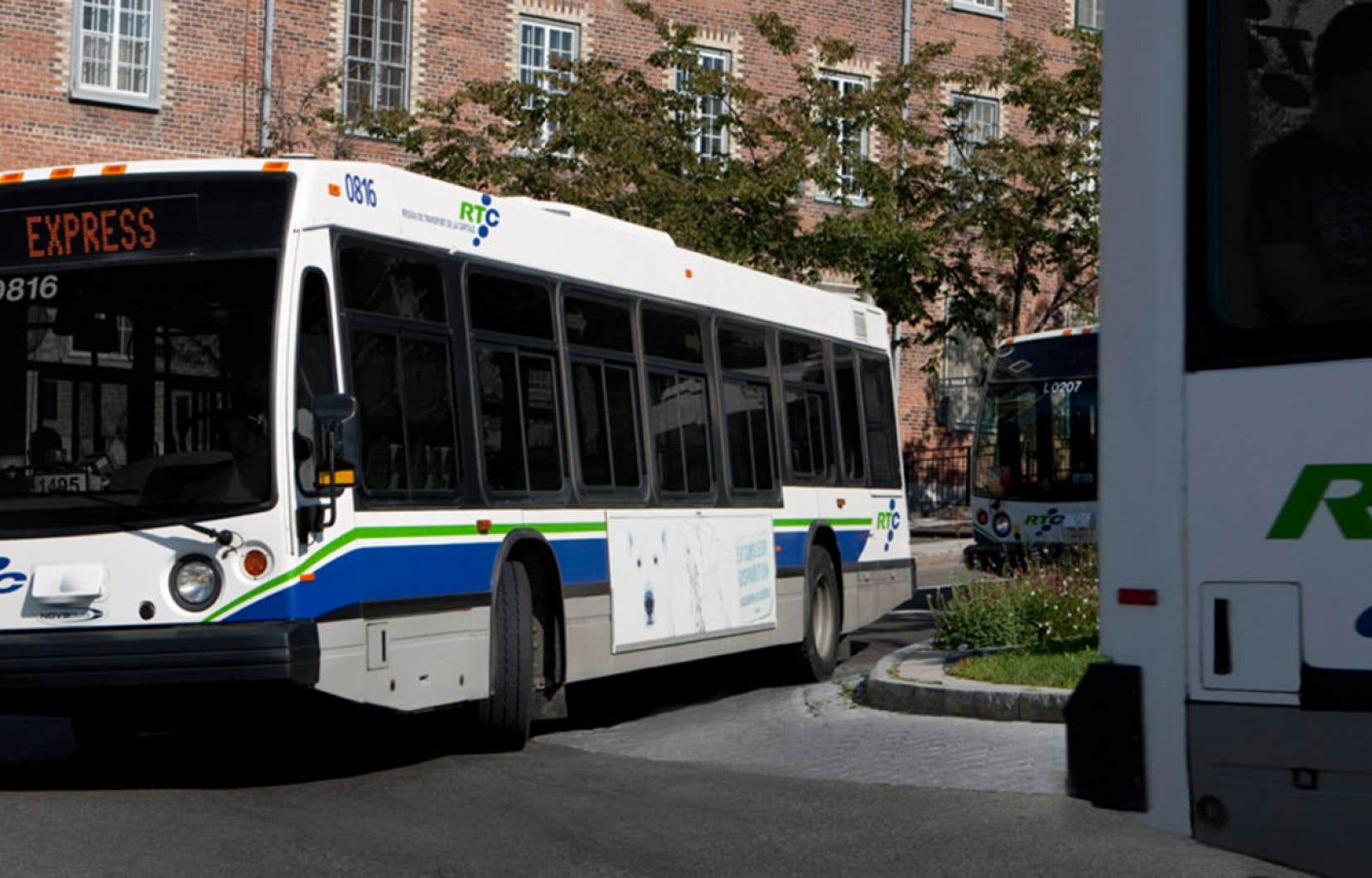It’s quite a headache to electrify a fleet of buses or heavy trucks. Given the limited space, installing the necessary charging infrastructure in an existing parking lot or garage is not easy. Unless it is possible to pass… through the ceiling.
As part of a pilot project that is also a first in North America, the Réseau de transport de la Capitale (RTC), in Quebec City, will test a vertical charging solution provided by the Japanese equipment manufacturer Hitachi, through its subsidiary Hitachi Energy Canada. Basically, the RTC will put on the road electric buses that can be recharged from a terminal that descends from the ceiling of the hangars of the transport company.
Casually, we concluded at Hitachi, exploiting the heights of existing buildings is the best way to electrify fleets of large commercial vehicles such as buses or delivery trucks. All you have to do is centralize the electrical infrastructure — which will eventually require megawatt hours of energy each month — and then route power through the roofs of buildings and vehicles.
“Lack of space is a barrier to adoption for everyone [dans le transport lourd] “, explains to Duty Daniel Simounet, vice-president of the Transport sector for Hitachi Energy, whose Canadian headquarters are located at ABB’s premises in the Saint-Laurent borough of Montreal. Rather discreet in Quebec so far, Hitachi Energy recently affixed its slate to the front of the Varennes plant where ABB produced electrical transformers before it, which are used by Hydro-Quebec.
The company, already present in Europe, is therefore starting from Quebec to conquer the rest of North America in a way with its charging solution for current and future large electric vehicles.
“Our solution makes it possible to keep existing parking lots. Our project in Quebec will be a first in North America, because the RTC will test different types of connections, including a vertical connection that descends from the ceiling and therefore does not take up additional space on the floor. »
In addition to the Quebec City RTC, Hitachi Energy is running a similar pilot project in California, in partnership with Penske Corporation, a major US commercial carrier. “This ability to use space vertically is unprecedented in the world of trucking,” says Daniel Simounet.
Annoying concentration
Heavy-duty vehicles produce more than their fair share of polluting emissions from the transportation sector, but the deadlines imposed by governments to decarbonize them are not as stringent as those imposed on light-duty vehicles.
It’s a different puzzle that will have to be solved to electrify heavy transport. Charging stations will most likely be concentrated in the yards of major carriers. Given the sheer size of the batteries needed to power heavy trucks or buses, recharging dozens of these vehicles at the same time at the same location will require an enormous power supply.
Well aware of this impending logistical and energy challenge, Hitachi Energy believes it has developed the ideal solution to minimize the impact of the electric shift in commercial transportation on North American public power grids.
“Everyone is pushing towards electrification at the same time, we can see the bottleneck arriving quickly,” says Daniel Simounet. The warehouses and service centers where these vehicles will be charged will soon need megawatts of electricity.
All this is new, both for carriers and for electricity networks, continues the expert from Hitachi Energy. “It’s quite a paradigm shift. Of course, the capacity of public services must be taken into account. Here, Hydro-Québec is ready. Other suppliers elsewhere in North America will be surprised by the demand for electricity caused by all these electric trucks. There may not be enough electricity for them. »
This is why, in addition to managing space, commercial vehicle fleet operators will also have to manage the charging schedule, to avoid overloading the networks at peak times. All of this will require tight management of energy supply and infrastructure to ensure charging at the right time and at a reasonable price.
Eliminating GHG emissions will be the challenge of the next decade for North American carriers. It may be complicated, but it is not impossible, assures Daniel Simounet. “At the technological level, it is sure that it is feasible. Charging infrastructure will take up a lot of space. There are transport companies that might have difficulty installing all the equipment. »
“Achieving all of this is possible. It won’t be easy, but it’s not true to say it’s impossible,” he adds.
